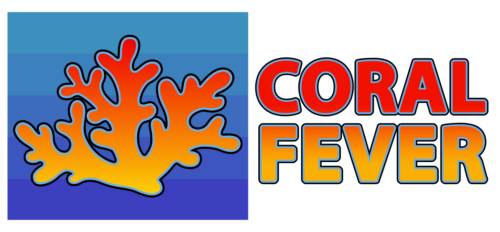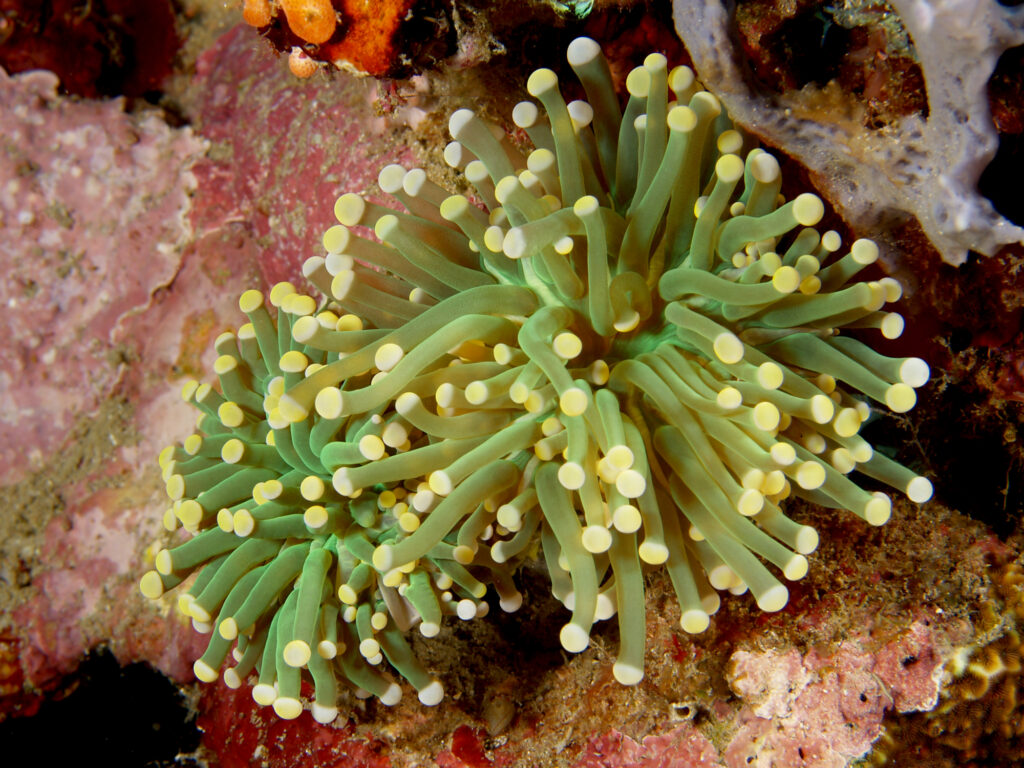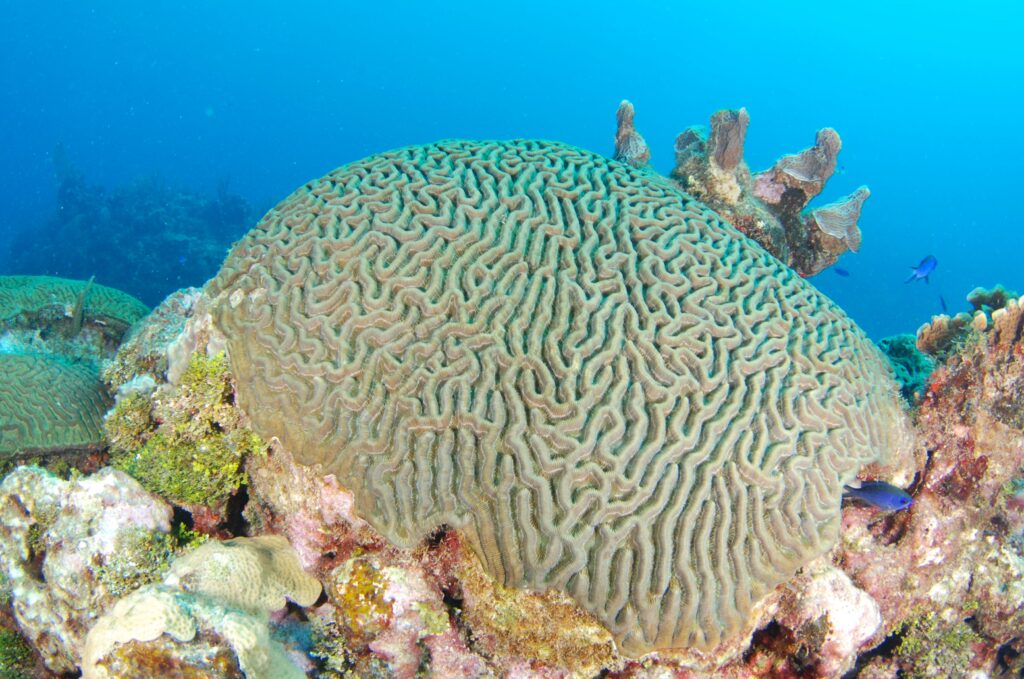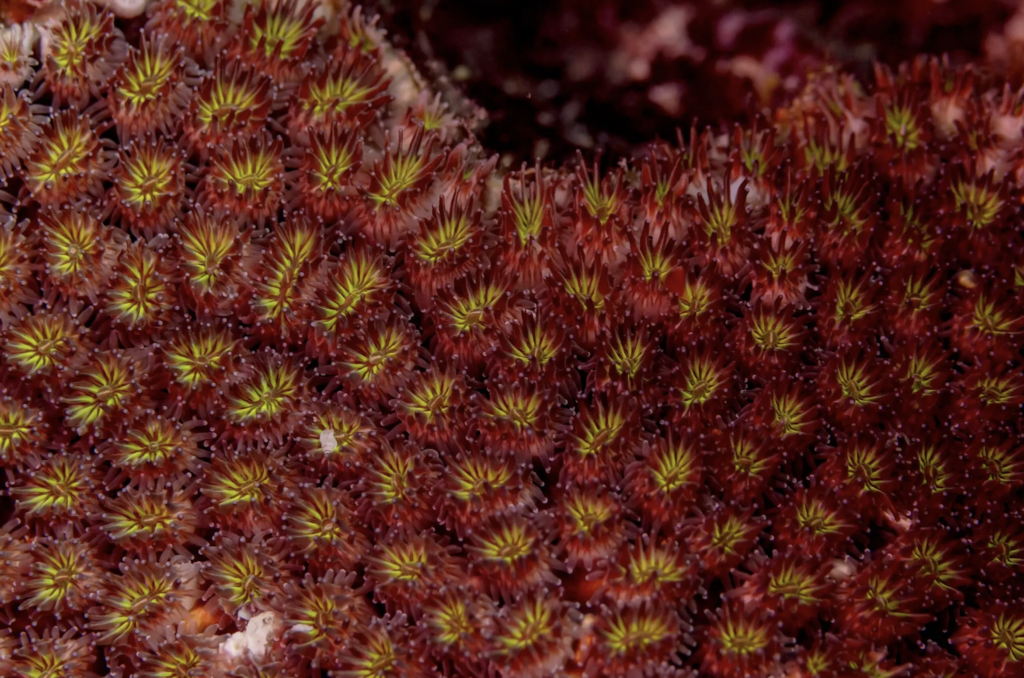LPS Corals, short for “Large Polyp Stony Corals,” are some of the most captivating corals found in tropical reefs.
Unlike their SPS relatives, LPS corals have large, fleshy polyps that create a bold and colorful display. Their soft, extended polyps sway with the ocean currents, adding flowing movement and a sense of life to the reef. LPS corals come in a variety of shapes, from thick, branching structures to massive, rounded colonies, and are often available in striking colors, including neon greens, purples, and blues.
LPS corals grow more slowly than SPS but are generally hardier, making them a popular choice for reef tanks. Their large polyps are adapted to catch food particles from the water, so they often enjoy supplemental feeding in addition to light-based nutrition. LPS corals’ unique forms, colors, and gentle movement make them a mesmerizing addition to any reef and provide shelter for smaller marine life.
Popular types: Euphyllia (Hammer, Torch, and Frogspawn corals), Favia (Brain Coral), Blastomussa, Duncanopsammia (Duncan Coral), and Acanthastrea (Acan Coral)
What do LPS look like?
LPS corals, or “Large Polyp Stony” corals, are instantly recognizable for their large, fleshy polyps that create a vibrant and eye-catching display. Unlike SPS corals, which are fine and delicate, LPS corals have thicker, more substantial structures with a soft, almost balloon-like appearance that sways with water flow. Their polyps can be so large that they often look like colorful underwater flowers or anemones.
Each type of LPS coral has a unique shape and texture:
- Branching LPS corals, like Hammer and Frogspawn, grow in thick, branching clusters, with each branch ending in a fleshy, extended polyp.
- Massive LPS corals, such as Brain Corals, form large, rounded colonies with grooved patterns that resemble the folds of a brain.
- Encrusting and Button LPS, like Acan Corals, spread out in thick carpets with individual, fleshy polyps that give a textured, bumpy appearance.
LPS corals come in a stunning range of colors, including neon greens, vivid reds, blues, and purples. They are often bi- or tri-colored, creating a striking contrast within each polyp. This vibrant color and large, flowing structure make LPS corals a popular choice for reef aquariums, where they add both color and movement to the reefscape. Their bold, fleshy polyps create a lush, dynamic environment that’s visually captivating and provides hiding spots for small fish and invertebrates.
What Do LPS Eat?
LPS corals rely on both light and food particles for nutrition. Like other corals, they have a symbiotic relationship with zooxanthellae, tiny algae living within their tissues. The zooxanthellae use sunlight to produce energy, which they share with the coral through photosynthesis.
However, LPS corals also benefit from additional feeding due to their large, fleshy polyps. Unlike SPS corals, LPS corals have mouths big enough to catch and consume small meaty foods. In the wild, they capture zooplankton, small fish, and other organic particles floating in the water.
In a reef tank, LPS corals thrive with supplemental feeding. They enjoy foods like mysis shrimp, brine shrimp, zooplankton, and pellet or powdered coral food. Regular feeding helps keep them healthy, supports vibrant colors, and can even accelerate their growth. Just be sure to avoid overfeeding, as too much food can affect water quality in the tank.




